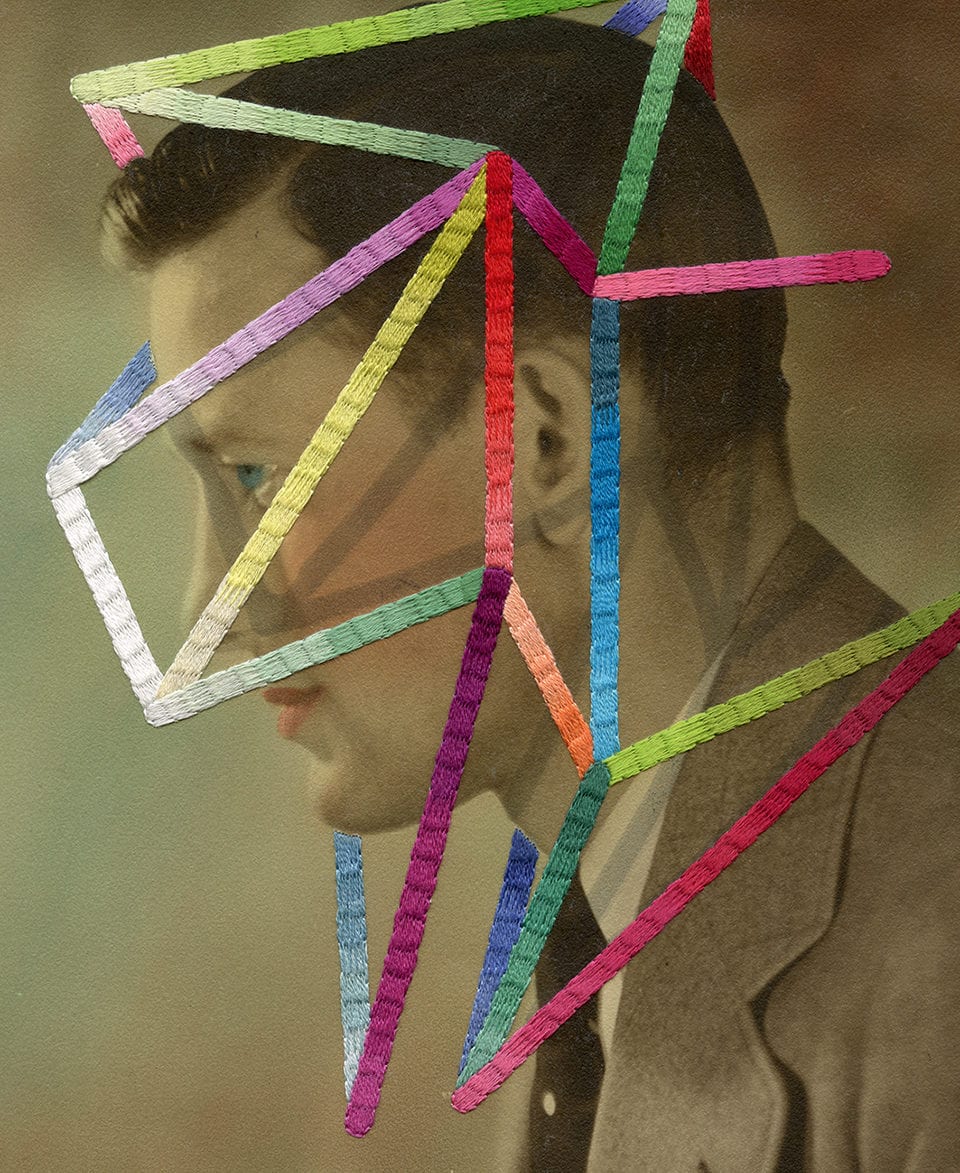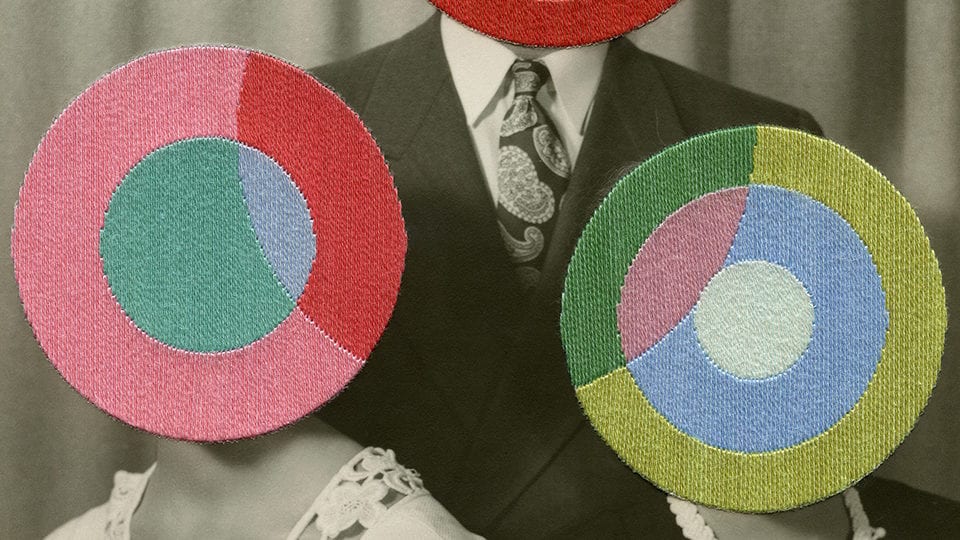A rainbow of geometric shapes obscures the faces of Julie Cockburn’s found photographs; they are playful, malignant – subjects covered with a thousand pinpricks. With names like The Welder and The Ecologist, the embroidered figures on display at Flowers Gallery, London, are compelling archetypes, transformed from vintage studio portraits into something much more complex and intriguing.
Titled as a nod to the poet Emily Dickinson, Telling it Slant continues Cockburn’s work in layering pre-existing images with intricate stitching. At a glance, some of the circle-swaddled photographs seem to reference John Baldessari’s dot portraits. However, on closer inspection, onlookers will find the various textures of closely-packed and meticulous thread. The faces and landscapes are sewn out of view, as if the shapes have grown from long-forgotten film.

There are pieces in which this concept takes on a more literal role. In Cable Car (2019), the overhanging lines of the photographs have been replaced with red string. A more playful example is a pair of pictures titled Feed the Birds (2019), in which a string of tiny glass beads runs from the hands of people to the mouths of swooping seagulls. Seagulls also appear in a pair of images titled Plumage (2019). Feathers turn into a bloom of overlapping ovals.
“Tell all the truth but tell it slant,” Dickinson’s poem goes. At a time when it has never been easier to reconfigure images, and where the truth has never been so threadbare, the care and meticulousness of Cockburn’s reworking is an interesting contrast to the quick-fire editing of internet culture. Does the craft and labour behind their production make them more authentic than a few spare minutes on Photoshop? What is hidden and what is revealed when the original image is forever entangled in fresh needlework?
Thomas McMullan
Until 2 November. Find out more here.
Lead image: Julie Cockburn, Family Circle, 2019. Hand embroidery on found photograph,





